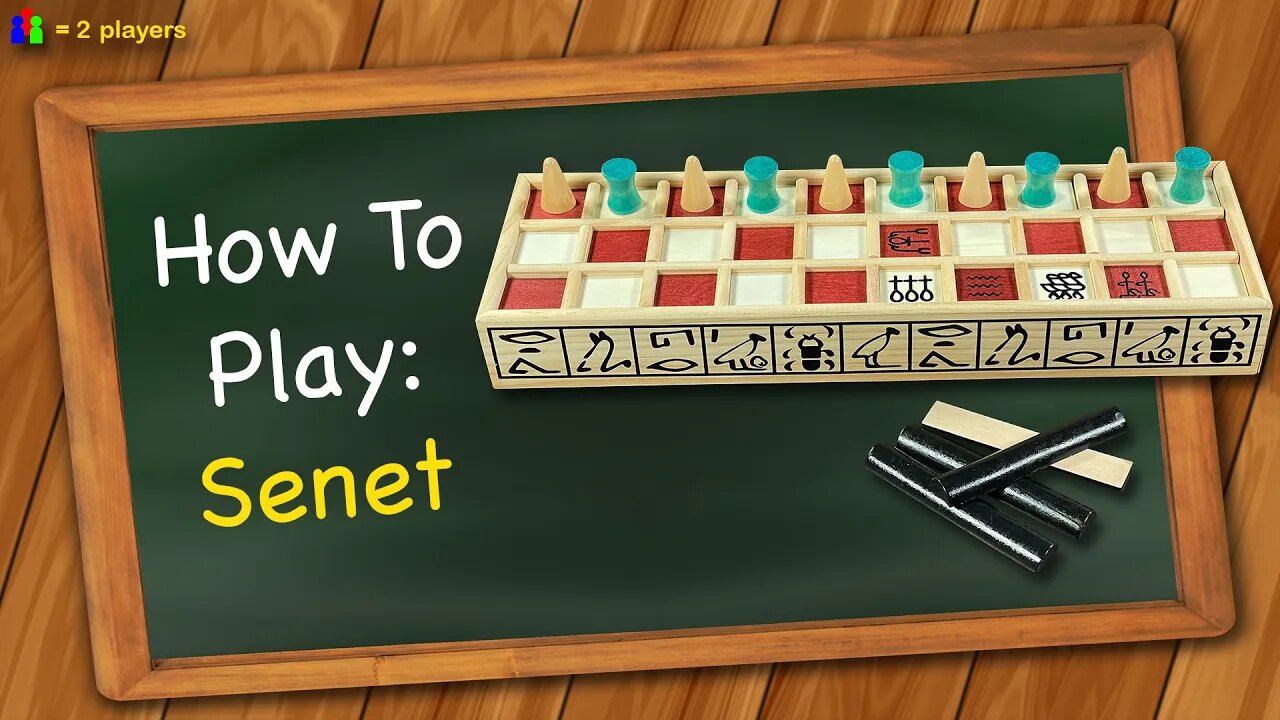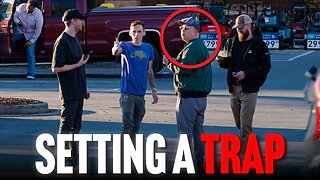Premium Only Content

How to play Senet
Learn the rules to the board game Senet quickly and concisely - This video has no distractions, just the rules.
Don't own the game? Buy it here:
amazon.com - https://amzn.to/3ZuIZRX
amazon.ca - https://amzn.to/3ZBtJ5J
amazon.co.uk - https://amzn.to/45gaJLy
amazon.nl - https://amzn.to/457XnRd
(As an Amazon Affiliate, I earn from qualifying purchases)
RULES:
The object of the game is to bear your pieces off the board first. Layout the board. Pieces move round the board like so, with the invisible numbers 1 through 30 assigned as so. Setup the pieces alternating like so, with a darker piece on the 10 square. Piece movement is determined by throwing 4 two-sided dice sticks. One flat side up is 1. Two is 2. Three is 3. Four is 4. And all four rounded sides up is 6. Alternatively, you can play with a die but you ignore 5s.
Players take turns rolling to see who can roll a 1 first. The first to roll a 1 takes control of the darker pieces for the remainder of the game and moves the piece on square 10 forward 1 square. Then that player rolls again. On your turn, you move a piece exactly the number rolled. If you rolled a 1, 4, or 6; then you get to go again. If you rolled a 2 or 3, then after moving your turn ends.
If you move to the same square as an opponent’s piece, their piece is “under attack”. Move their piece back to your piece’s starting position and you take its spot. Two pieces of the same color may not occupy the same square; but 2 pieces of the same color that occupy consecutive squares next to each other protect each other from being attacked. If you have 3 of your pieces in consecutive squares, then you form a block and your opponent may not attack or pass pieces over your block.
If you are unable to move a piece forward, then you must move a piece in reverse, still swapping locations of an opponent’s piece you land on. If you are unable to move either direction, then you do nothing and your turn ends.
Square 27 is “water” and it is a trap. Any piece that lands on this square must return to square 15. If square 15 is already occupied, then the piece returns to the closest to the start of the board that is available. Squares 26, 28, and 29 are safe, and pieces there may not be attacked. When a piece would move to a square beyond 30, it is called “bearing off” and the piece removed from the board. You may not bear off a piece while you still have pieces in the 1st row. If you bear off a piece with a roll larger than the number of squares needed, then you transfer the remainder of the roll to moving another piece.
The first player to bear off all their pieces wins. If you want, you can play for points over multiple rounds. The player who wins the round scores 1 point for each of their opponent’s pieces in the 3rd row, 3 points for each piece in the first or second row.
-
![I'm Grand (Master) [Official Music Video] - Triple S Games & Sheet Music Boss](https://1a-1791.com/video/s8/1/9/v/q/d/9vqdo.0kob-small-Im-Grand-Master-Official-Mu.jpg) 3:36
3:36
Triple S Games
1 year ago $0.07 earnedI'm Grand (Master) [Official Music Video] - Triple S Games & Sheet Music Boss
2K6 -
 LIVE
LIVE
Kim Iversen
4 hours agoTrotskyite Neocons: How MARXISTS Built the Modern GOP
7,120 watching -
 LIVE
LIVE
The Jimmy Dore Show
2 hours agoImmigrant Firefighters ARRESTED By Border Patrol! Zionists CENSORING Wikipedia! w/ Dave DeCamp
4,349 watching -
 LIVE
LIVE
Nerdrotic
2 hours ago $3.19 earnedLet's TACO-bout Take Us North, Hollywood COPE! Cracker Barrel CRACKED! | Friday Night Tights 369
1,752 watching -
 LIVE
LIVE
StoneMountain64
3 hours ago#1 Battlefield Mastery Session with the BOYS
202 watching -
 1:23:45
1:23:45
Roseanne Barr
4 hours agoDeclassifying Presidential Sex Slavery W/ Cathy O’Brien | The Roseanne Barr Podcast #113
81K24 -
 LIVE
LIVE
FusedAegisTV
18 hours agoHollow Knight Silksong Waiting Room ~~ pt. I
89 watching -
 8:37
8:37
Warren Smith - Secret Scholar Society
6 hours agoJesse Lee Peterson EXPOSES How Stupid David Pakman Really Is
10.2K5 -
 44:44
44:44
Scammer Payback
8 hours agoCrazy Confrontation with Hacked Scammer Group
4.56K2 -
 1:09:00
1:09:00
vivafrei
3 hours agoKamala Harris Security Being "Pulled"? Kilmar Wants Trump Admin GAGGED! Fake News GALORE & MORE!
59.4K29